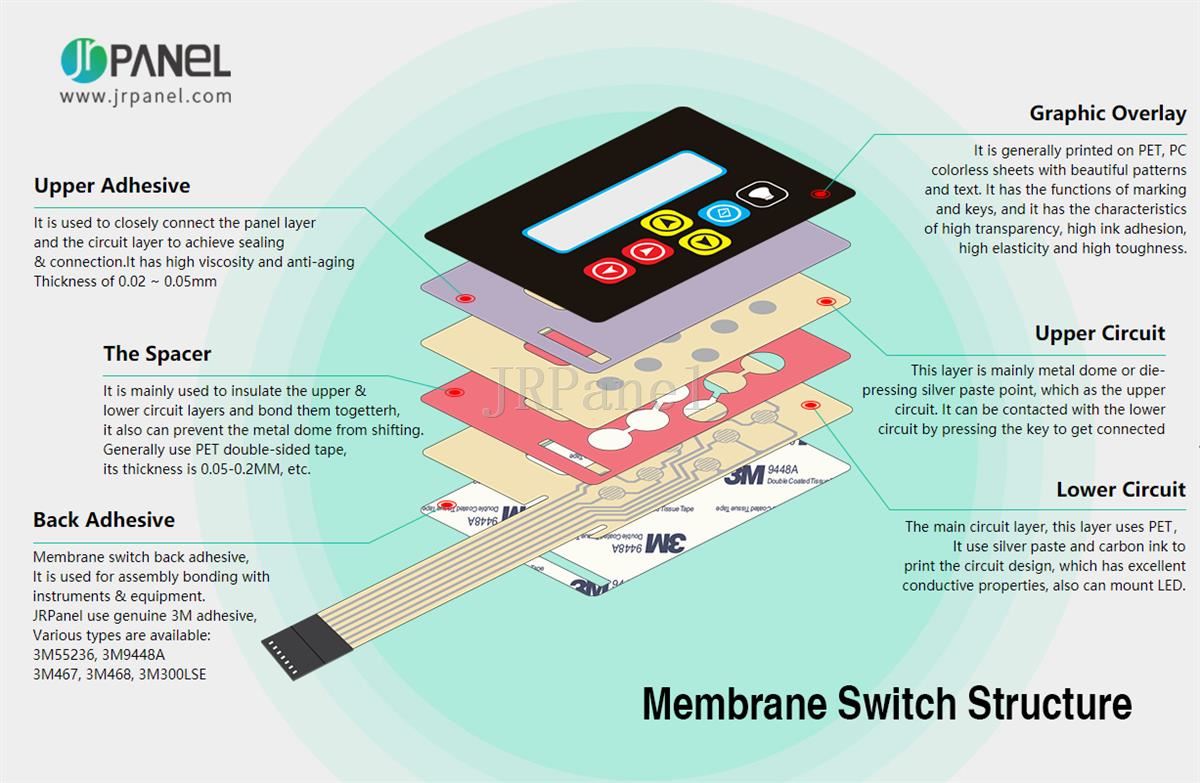How Membrane Switches Enable Lightweight and Long Lasting User Interface Solutions
How Membrane Switches Enable Lightweight and Long Lasting User Interface Solutions
Blog Article
The Ultimate Source on Membrane Layer Changes: Style, Capability, and Applications
Membrane changes offer as an intriguing crossway of layout and performance, playing a critical function in modern-day user interfaces throughout different fields. As we discover the diverse applications of membrane layer switches, it comes to be noticeable that their versatility and toughness are important in environments ranging from health care to consumer electronic devices.

Recognizing Membrane Layer Switches
Membrane layer buttons are a kind of customer interface innovation extensively utilized in numerous electronic tools, defined by their slim, flexible style and capability. These switches contain several layers that include visuals overlays, sticky layers, and wiring, enabling a efficient and portable user interface for users. They can be found in devices, clinical gadgets, and industrial control panels, giving a trusted method for customer interaction.
One of the key benefits of membrane layer buttons is their capacity to stand up to contaminants such as dust and wetness, making them suitable for atmospheres where durability is vital. Their inconspicuous layout allows for seamless integration right into various applications, while the adjustable visuals overlays improve individual experience by supplying clear aesthetic feedback. In addition, membrane layer buttons can suit a selection of innovations, such as tactile responses and backlighting, further enhancing their use.
The manufacturing procedure for membrane switches over normally involves screen lamination, die-cutting, and printing strategies, guaranteeing precision and uniformity in production. On the whole, membrane switches represent a functional and effective remedy for modern-day electronic devices, incorporating functionality with visual allure in individual interface layout.
Trick Components and Layout Aspects
A variety of crucial parts and design components integrated to produce a reliable membrane button. At the core, the graphic overlay offers both aesthetic and useful purposes, supplying an user-friendly user interface while protecting inner components from environmental factors. The choice of materials, generally polyester or polycarbonate, influences sturdiness and responsive feedback.
Under the overlay, the adhesive layer makes certain the button adheres firmly to the substratum, which can be plastic, steel, or glass. The spacer layer is crucial, as it maintains the needed void between the overlay and the circuit layers, enabling efficient actuation. Membrane Switches. Circuit traces, generally made from conductive ink or adhesive, are printed on a flexible substrate, allowing electrical signals to be transferred when stress is applied
Layout factors to consider also include the plan of tactile domes or embossing that offer physical feedback to the customer, improving the general experience. In addition, the layout and spacing of the switches should be enhanced for ease of usage, making sure that individuals can navigate the user interface with ease. Generally, these components and style aspects function synergistically to develop a dependable, useful membrane switch customized to particular applications.
Capability and Operation Device
At the heart of efficient capability for membrane layer switches exists their functional mechanism, which assists check out this site in individual communication with a straightforward yet effective style. These buttons run on the concept of stress activation, where a user uses pressure to an assigned location of the button (Membrane Switches). This action compresses the layers of the button, completing an electric circuit that sends out a signal to the connected gadget
The building generally includes a top graphic layer, a sticky spacer layer, and a lower circuit layer, which jointly form a durable user interface. When pressure is used, the leading layer falls down versus the bottom circuit layer, permitting conductive traces to link. This layout not only allows clear tactile responses yet also makes sure resilience and integrity, as the buttons are typically immune to dust and wetness.
Additionally, the versatility of membrane switches over enables combination with numerous technologies, consisting of LED indicators and microcontrollers, improving their capability. By offering a streamlined user interface that minimizes mechanical wear, membrane switches remain a preferred selection in applications ranging from consumer electronic devices her response to commercial tools, guaranteeing ideal performance and customer fulfillment throughout diverse atmospheres.
Kinds Of Membrane Layer Switches

One more substantial classification is illuminated membrane switches, which include backlighting to enhance visibility in low-light conditions. These switches are typically made use of in control panels and dashboards where clear visibility is essential.
Additionally, there are personalized membrane layer switches over designed to fulfill details dimensional, graphical, and functional requirements. These personalizations can include distinct shapes, shades, and formats, permitting for smooth combination into different devices.

Applications Across Various Industries
How do membrane switches enhance functionality across varied industries? In the clinical market, membrane switches play an essential duty in devices such as analysis equipment and patient surveillance systems, where reliability and convenience of cleansing are vital.
In the automotive industry, membrane switches are generally used in control panels and control board, giving user-friendly controls that improve chauffeur safety and security and comfort. The consumer electronics market additionally gains from their light-weight and adjustable functions, allowing sleek layouts for smart devices and home devices.
Moreover, membrane buttons locate applications in commercial automation, where they add to efficient machinery procedure and monitoring systems. Their resistance to dust and moisture makes certain capability popular problems (Membrane Switches). Furthermore, the food and drink market employs membrane layer switches for devices control, where health and sturdiness are crucial
Final Thought
In verdict, company website membrane changes stand for an important development in interface modern technology, defined by their one-of-a-kind design and functionality. Their crucial elements, including visuals overlays and circuit traces, add to their functional effectiveness with pressure activation. The versatility of membrane layer switches facilitates their application across varied sectors, from clinical tools to consumer electronics. This thorough understanding enhances the importance of membrane buttons in boosting item usability and sturdiness in modern technological atmospheres.
Membrane switches over serve as an intriguing junction of layout and capability, playing a pivotal role in modern user interfaces across various markets.Membrane layer switches are a type of individual interface technology extensively utilized in different digital devices, characterized by their slim, versatile style and capability.At the heart of efficient capability for membrane switches lies their functional system, which promotes customer interaction through an easy yet effective layout. These switches run on the principle of stress activation, where a customer applies pressure to a designated location of the button.In conclusion, membrane layer changes represent an important innovation in user interface technology, defined by their special style and performance.
Report this page